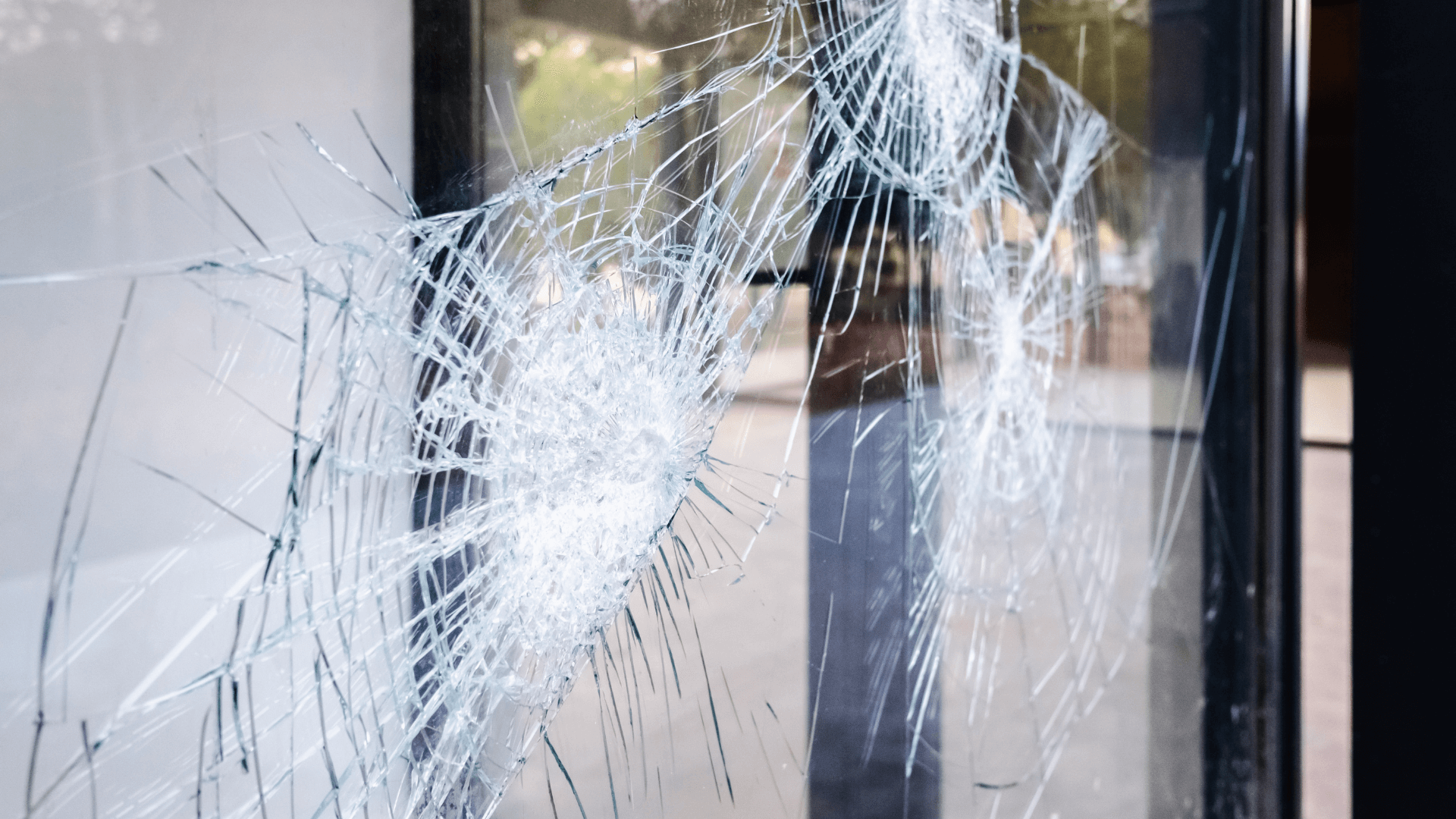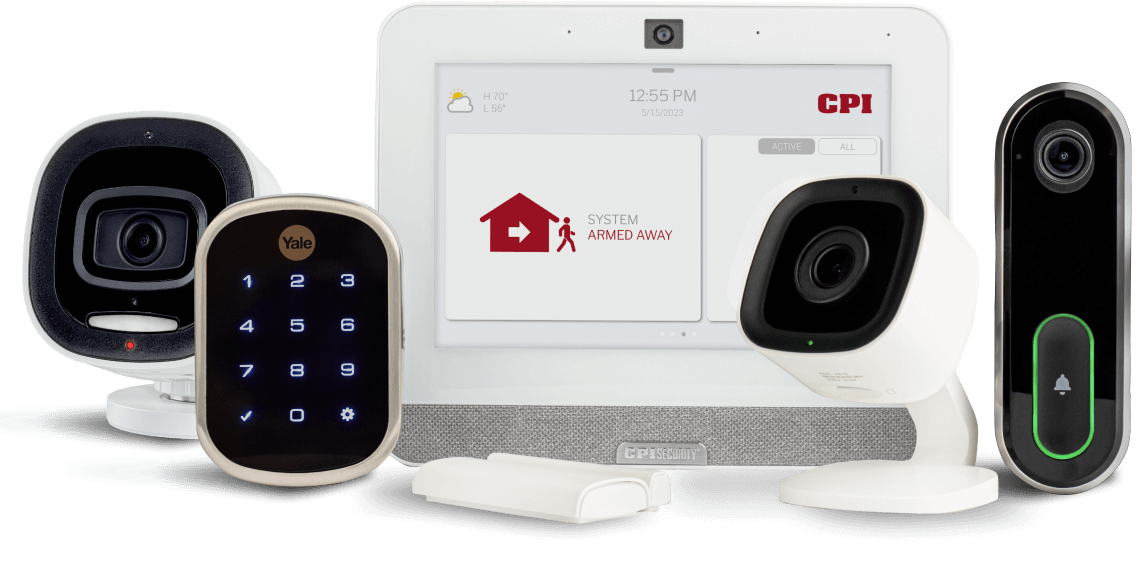One in every ten small businesses falls victim to burglary or theft every year. Even worse, the average loss from these incidents stands at a staggering $8,000 per occurrence. These statistics underline the gravity of what is too often commonplace – business break-ins. This blog post will delve into what to do if someone breaks into your business and highlight the importance of preparedness for business security.
Immediate Actions to Take in Case of a Break-In
First off, let’s cover the most critical information. Taking immediate and appropriate action is crucial if you find yourself in the unfortunate situation of a break-in at your business. Here are some steps to ensure personal safety, facilitate law enforcement’s investigation, and help your business recover quickly.
Ensure Personal Safety
Your safety and that of your employees should always be the first priority. If you are present during the break-in:
- Stay Calm: It’s easier said than done, but maintaining composure will help you think clearly and make rational decisions.
- Don’t Engage: Never try to apprehend or confront the intruder yourself. This can escalate the situation and put you at risk.
- Find a Safe Place: If possible, leave the premises immediately. If not, find a secure place to hide until help arrives.
- Silently Call for Help: If it’s safe to do so, call the police. Many emergency services have text options if speaking might put you at risk.
Contact Law Enforcement
As soon as you discover the break-in or have confirmed your safety if you were present during the burglary, contact the local law enforcement agency to report the break-in. Provide them with as much information as possible, such as the time of the incident, details about the intruder, and what you believe might have been taken. The sooner you report the incident, the higher the chances of catching the perpetrators and recovering any stolen items.
Document the Scene
Once the police have been notified, start documenting the scene without disturbing any potential evidence. This will be crucial for both the police investigation and any insurance claims. What does this mean?
- Don’t Touch Anything: It’s critical not to disturb the crime scene before law enforcement arrives. They’ll want to see everything as it was immediately after the break-in.
- Photograph the Scene: Use your phone to take pictures of the scene from multiple angles. Capture any signs of forced entry, damaged property, and areas where items are missing.
- Make Detailed Notes: Write a list of what you think has been stolen, along with their approximate value. Include everything, no matter how small or insignificant it may seem.
Again – Don’t touch anything! Broken glass? Overturned furniture? Leave it alone until AFTER the police have completed their initial observation.
Recovery Steps Following a Break-In
Alright, you’ve taken care of the initial documentation, confirmed your (and your team’s) safety, and notified the police. Now what?
Cooperate with the Police
Your relationship with law enforcement during this time should be one of cooperation and transparency. Provide them with all the necessary information they need for their investigation. This includes:
- Any documents you’ve prepared.
- Photographs of the scene.
- A list of missing items.
- Any other relevant details about the incident.
- Security or CCTV footage.
Remember, the goal is to aid their investigation and increase the likelihood of recovering your stolen property.
Inform Your Insurance Company
After you call the police, your next call should be to your insurance company. Notify them about the break-in as soon as possible. It is vital to understand your policy, what it covers, and the process of making a claim. Most insurance companies require prompt notification of any incidents, and delays might lead to complications with your claim.
When you make the call, have your policy number ready, and be prepared to provide them with a general overview of the incident and the damages incurred. They will guide you through the claims process, which will likely include submitting the photos, a list of stolen items, and the official police report.
Communicate with Employees and Customers
In the aftermath of a break-in, it’s essential to communicate with your employees and customers. They may have concerns about their safety and the security of their personal information, especially if data theft was involved in the break-in.
For employees, arrange an all-hands meeting to discuss the incident. Address their concerns and reassure them about the measures to prevent future incidents.
For customers, consider a public statement or direct communication to those personally affected (if any). Transparency is critical, but it also ensures the message is calming and confident, emphasizing your actions to rectify the situation and enhance security measures.
Recovering from a break-in is a process that requires time, patience, and resilience. The most important thing is to learn from the incident and use it to improve your business’s security measures and preparedness for future incidents.
Evaluate Your Current Security Measures
A break-in is a stark reminder of the importance of robust security measures. It’s also an opportunity to critically analyze your current systems, understand how the breach occurred, and identify areas of improvement.
Analyze the Breach
Walkthrough how the break-in occurred to identify any vulnerabilities in your security system. Was it a forced entry, or did the intruders exploit a security loophole? Did they disarm your alarms or bypass your security cameras? The answers to these questions will help you pinpoint where your defenses failed and what needs to be improved.
Assess Your Current Security Systems
Once you understand how the breach occurred, it’s time to evaluate your overall security measures. Consider the following:
- Physical Security: Look at your locks, doors, windows, and lighting. Are there areas that are poorly lit or easy to access? Do your locks meet the latest security standards?
- Alarm Systems: Assess the effectiveness of your alarm systems. Were they activated during the break-in? If not, why not? Could their placement be improved?
- Surveillance Cameras: Evaluate your camera coverage. Are there blind spots? Is the image quality sufficient to identify intruders?
- Access Control: Review who has access to your premises. Are there too many keys or access cards in circulation? Could biometric access be a more secure solution?
- Cybersecurity: If data theft was part of the break-in, consider your cybersecurity measures. Are your firewalls, antivirus software, and data encryption up to date?
Remember, the best security approach is a comprehensive one that addresses all potential vulnerabilities. Using the insights gained from the break-in, you can improve your security measures, making your business a harder target for criminals.
Implement New Security Measures
Improving your business’s security involves more than buying the latest gadgets; it requires a comprehensive, tailored approach that suits your needs. A retail store might require high-resolution surveillance cameras to monitor customer activity, while a warehouse might benefit from robust access control systems. An office building may need advanced cybersecurity measures to protect sensitive data. Understanding that one-size-fits-all solutions are rarely effective is the first step toward creating a security plan for your business.
Introduce Any New Procedures
Your business security is only as effective as your training. New security measures often require changes in routine and additional training for staff. This could include new opening and closing routines, regular security checks, or procedures for responding to alarms. Ensure all employees are trained on these new procedures and understand their importance.
Install New Security Equipment
Whether it’s surveillance cameras, alarm systems, secure locks, or access controls, installation should be done by professionals to ensure they’re correctly set up and optimized. Remember to test all new equipment and systems thoroughly to ensure they work as expected.
Consider a CPI Business Security System
Upgrading your business security can be a significant undertaking, but it’s an investment that can save you not only money but also the stress and disruption caused by future break-ins. Remember, the key to effective security is regular review and adaptation to ensure your measures remain robust against evolving threats.
If you’re looking for a comprehensive, reliable, and tailored security solution, consider investing in a CPI Business Security System. With a wide range of products and services, including intrusion detection, video surveillance, and fire monitoring, CPI can help protect your business against a variety of threats. Give us a call today.
Preparedness Prevails
Dealing with a break-in at your business can be a challenging and stressful experience. However, by following the steps outlined in this post—cooperating with the police, informing your insurance company, communicating with employees and customers, evaluating your current security measures, and implementing new ones—you can not only recover from this incident but also make your business more secure and resilient to future threats.
Security is not a one-time task but an ongoing commitment. It’s crucial for businesses to regularly review and update their security measures to keep up with evolving threats and technological advancements.
Are you ready to take your business security to the next level? We invite you to schedule a call with CPI. Our team of business security experts will be happy to discuss your needs, answer your questions, and help you design a tailored security solution that protects your business effectively. Don’t wait for another break-in to happen. Take action today and secure your business for tomorrow.




